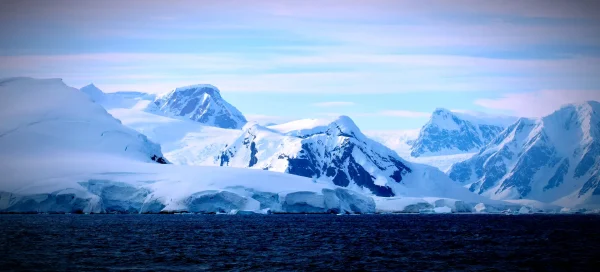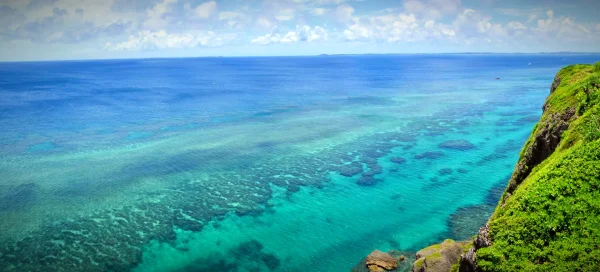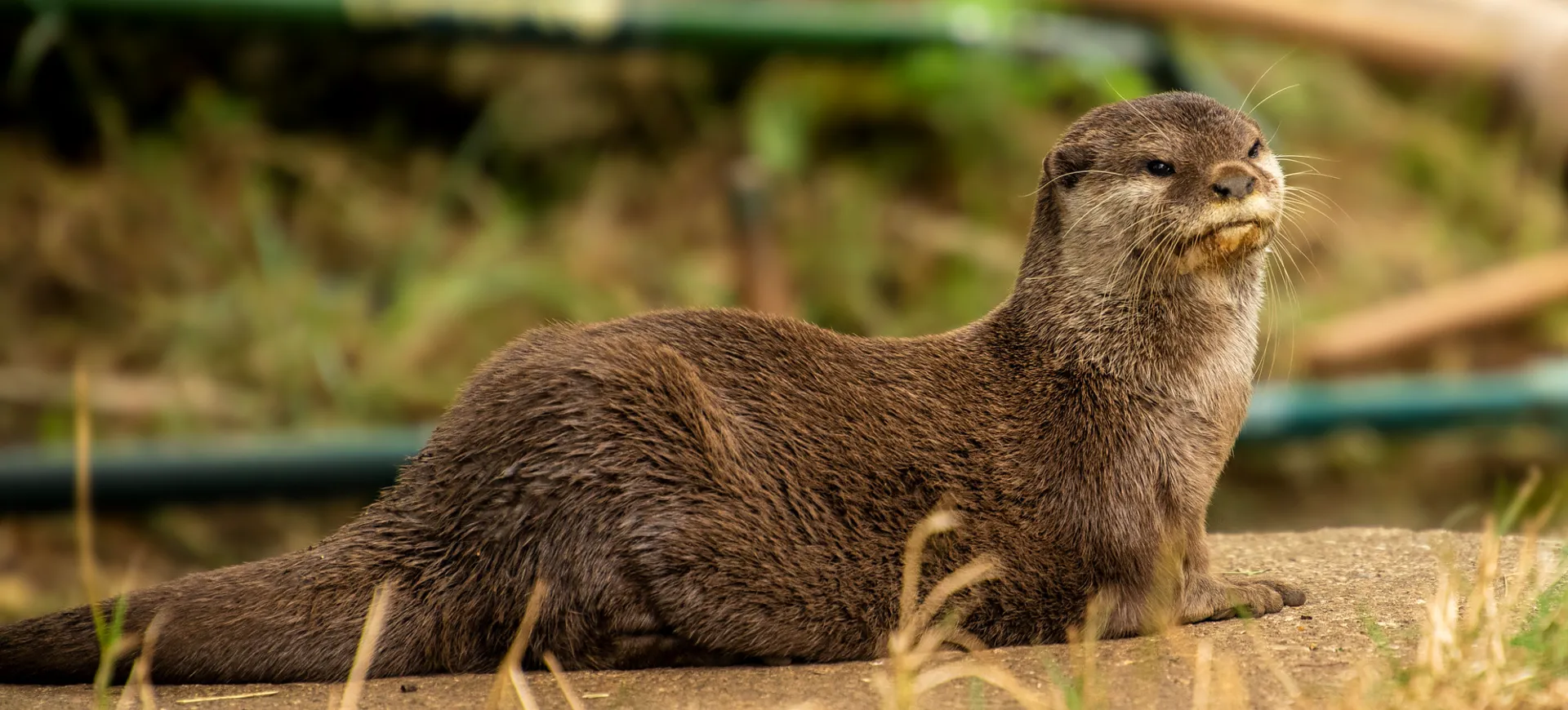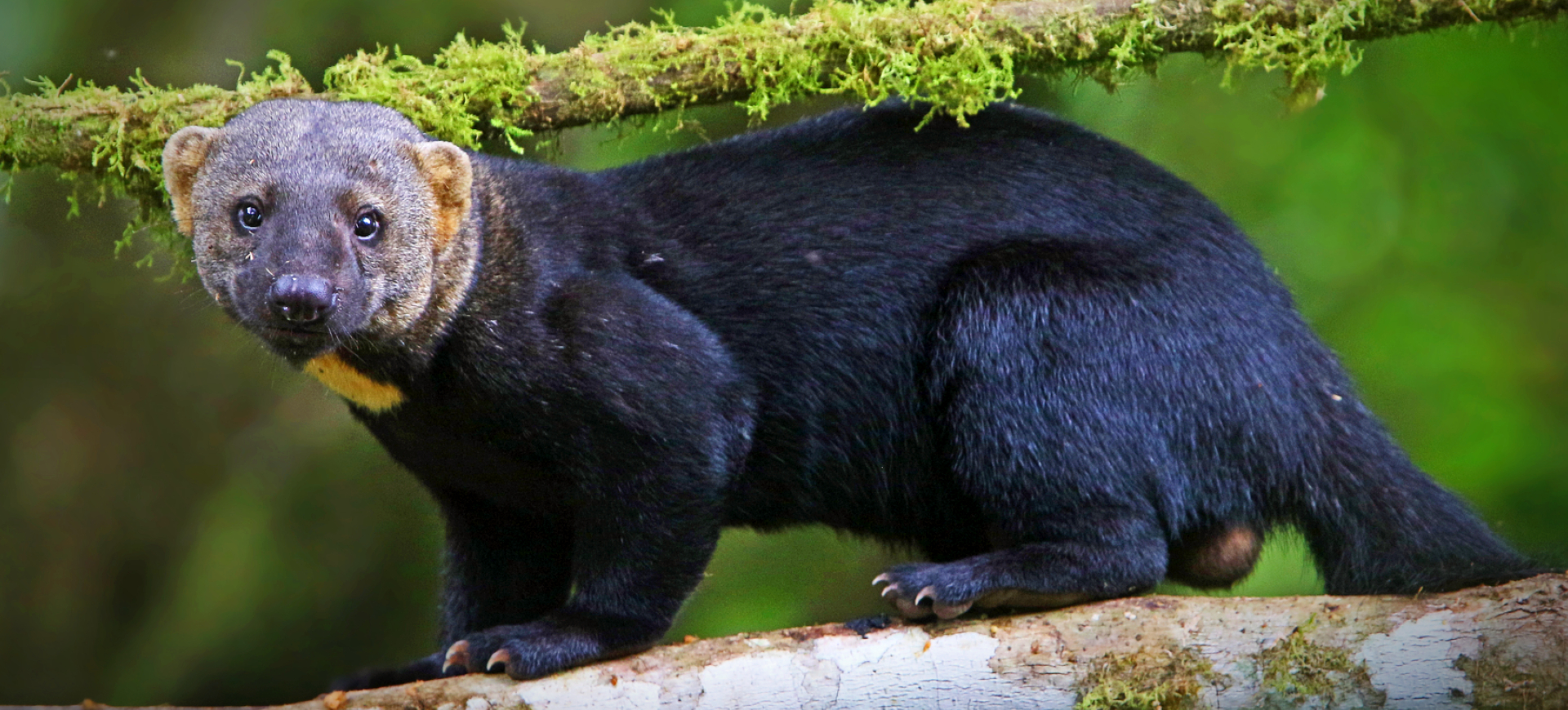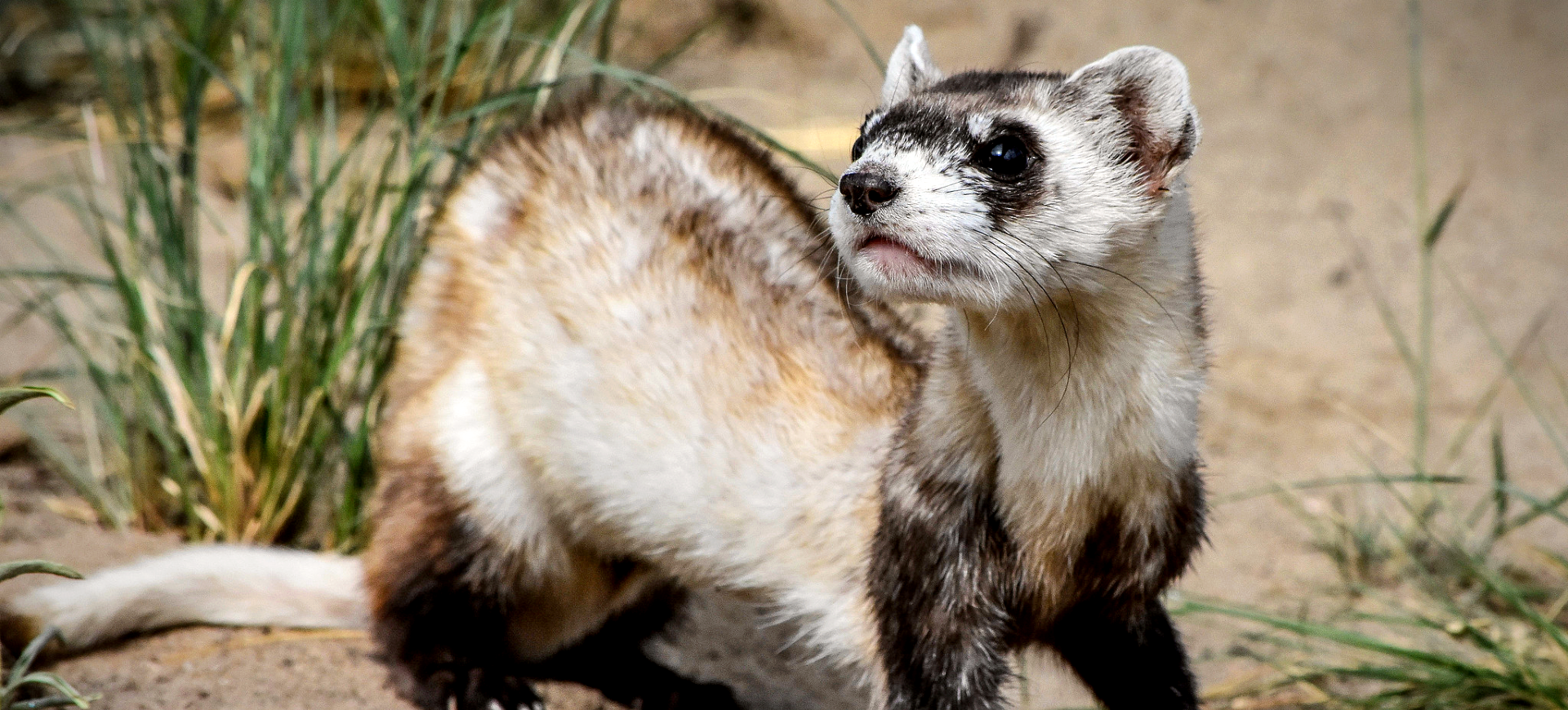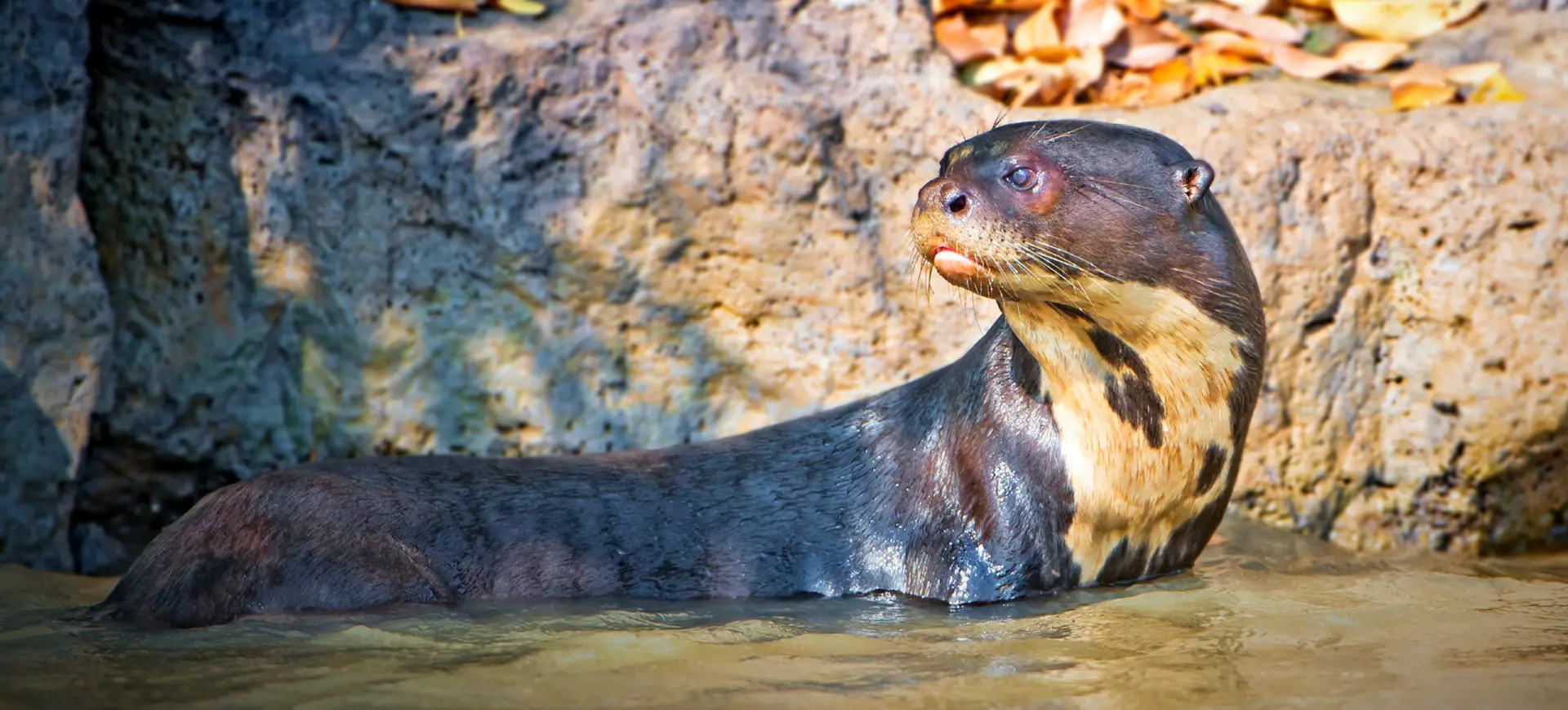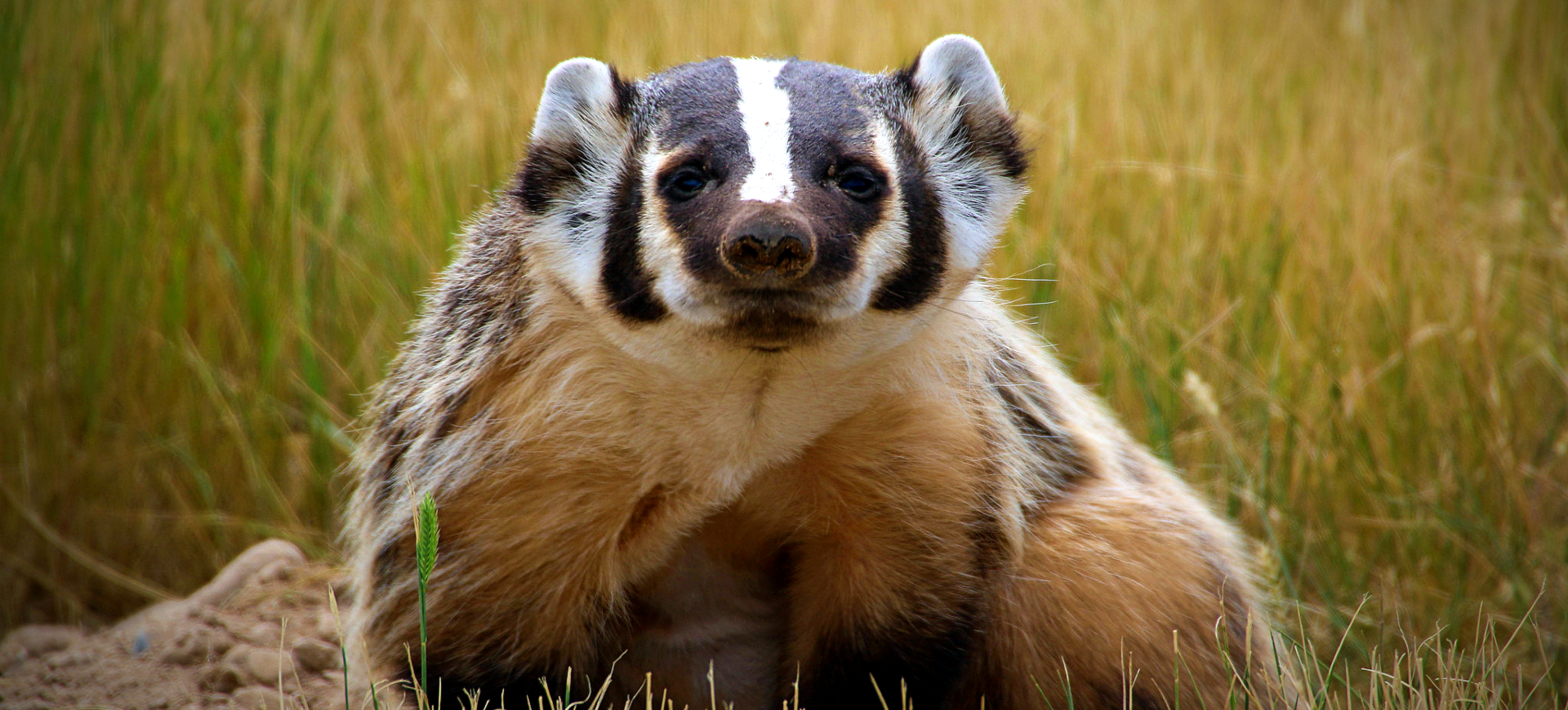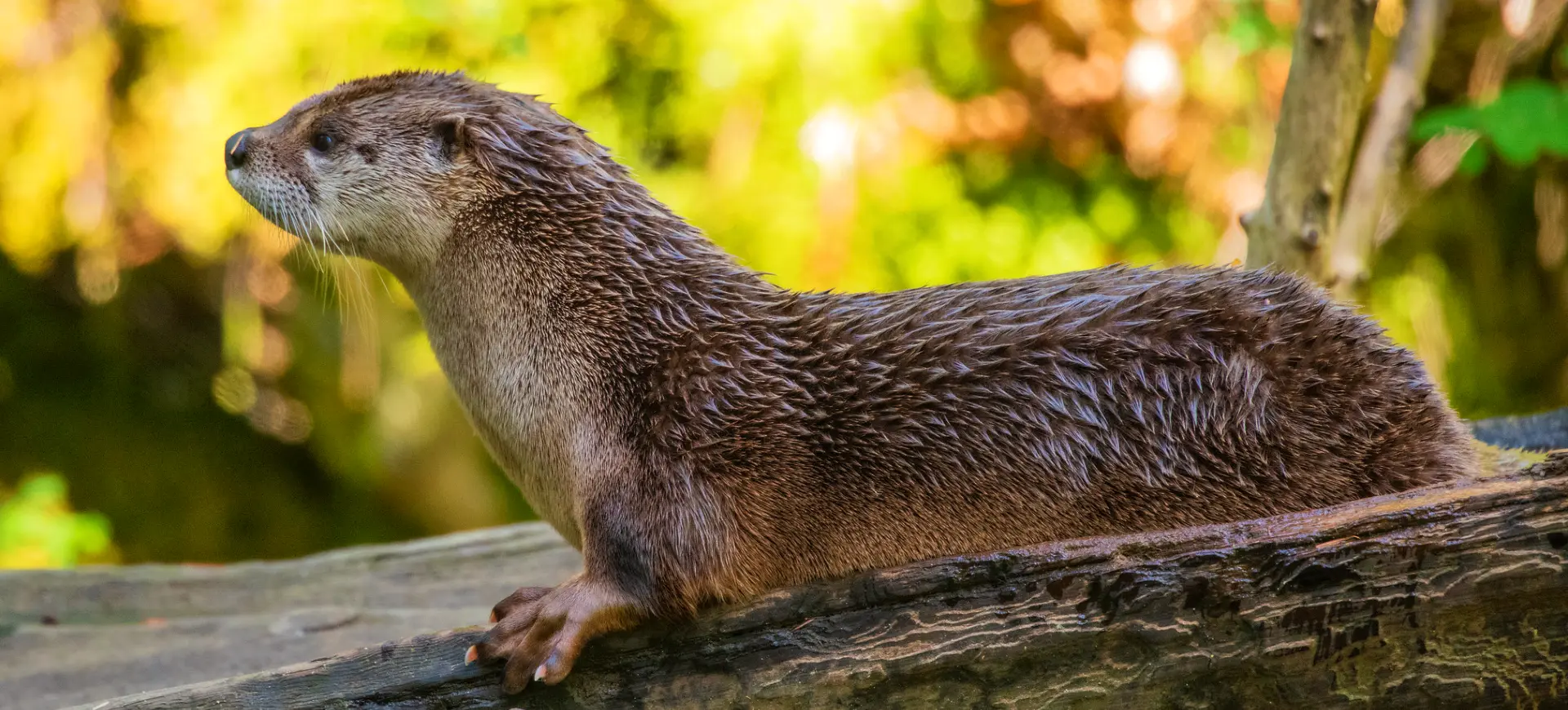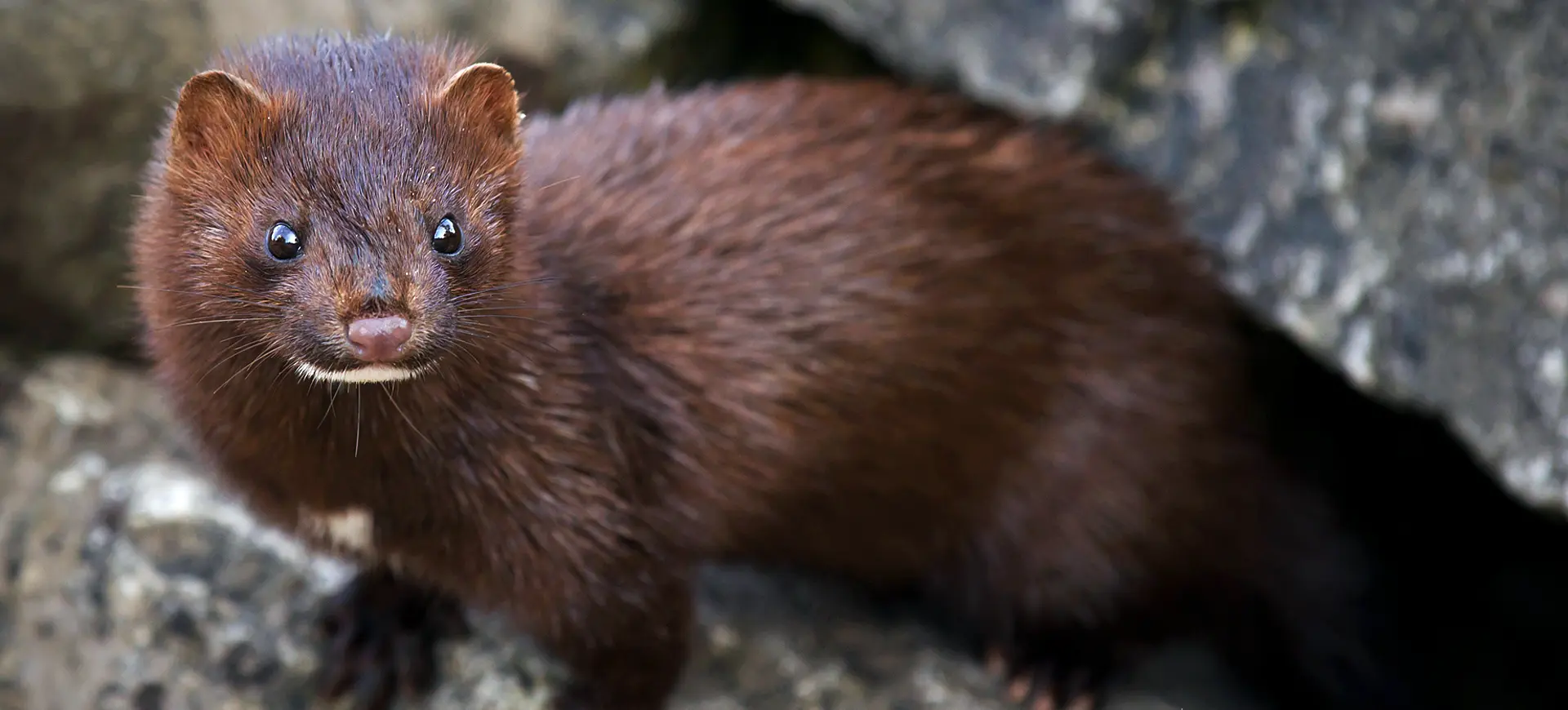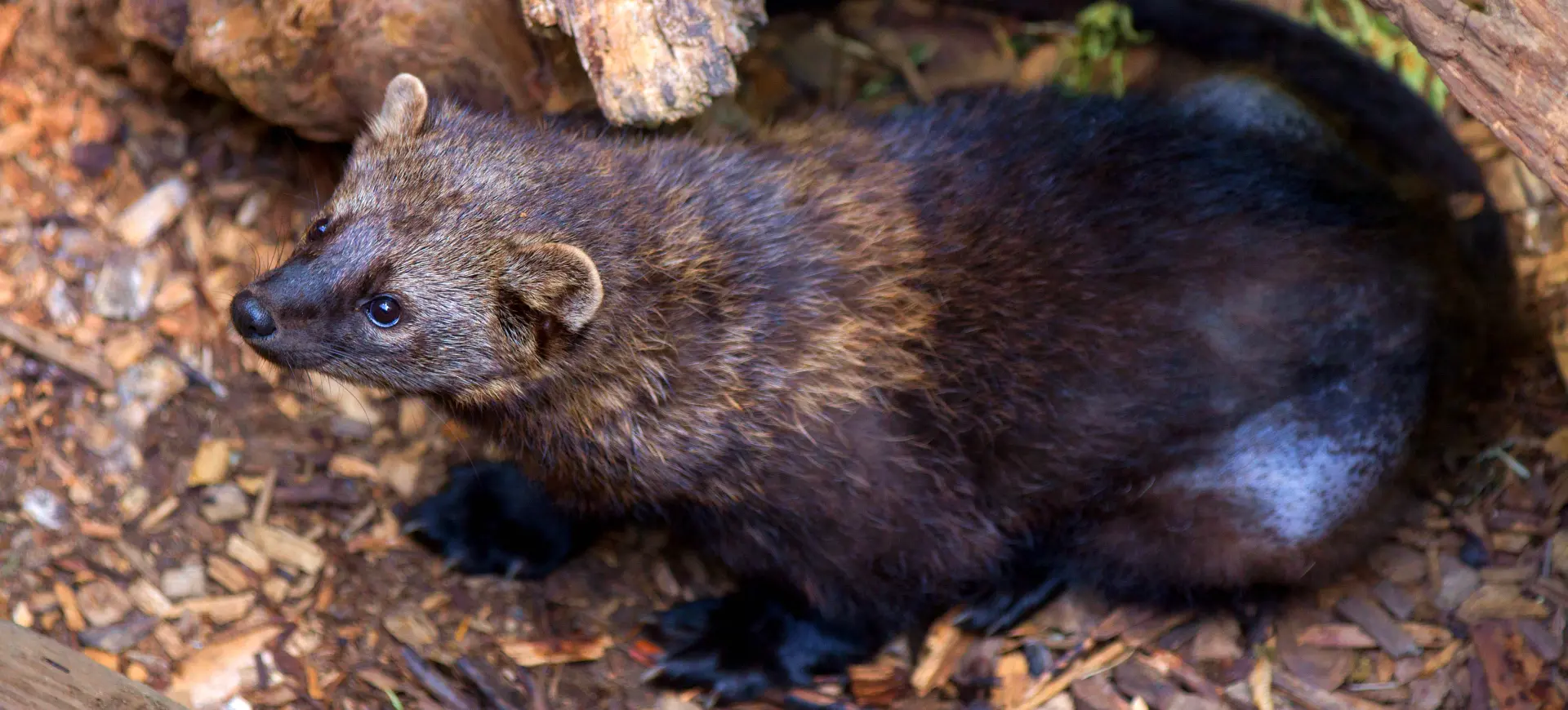Overview
The Sea Otter, Enhydra lutris, is a marine mammal native to the northern and eastern coasts of the Pacific Ocean. As the heaviest member of the weasel family but among the smallest marine mammals, they are well known for their thick fur, which is the densest of any animal. Sea Otters play a critical role in their ecosystem by preying on sea urchins that can otherwise devastate kelp forests, demonstrating a key example of a keystone species. They are distinguished by their playful behavior, often seen floating on their backs, using rocks to crack open shellfish, their primary diet.
Sea Otters have a unique way of maintaining their body temperature in cold waters through an extremely dense fur coat, rather than the fat common to other marine mammals. This adaptation requires them to spend a significant portion of their day grooming to keep their fur clean and waterproof, a critical behavior for survival. Their social structure is interesting, with individuals often grouping into same-sex rafts that can number in the hundreds. Despite their endearing appearance and behavior, Sea Otters face threats from oil spills, fishing net entanglements, and habitat loss, making their conservation a priority for marine biologists and environmentalists.
Conservation efforts for Sea Otters have included reintroduction programs, legal protections, and habitat restoration projects. These initiatives have led to recovering Sea Otter populations in some areas, though they remain endangered or threatened in others. The presence of Sea Otters is often celebrated as a sign of a healthy coastal ecosystem, where they contribute to the biodiversity and stability of marine habitats. Ongoing research and monitoring are essential to understanding sea Otter populations’ dynamics and the effectiveness of conservation strategies.
Taxonomy
Kingdom
Phylum
Class
Order
Family
Genus
Species
Sub Species
Type
Physical Description:
Sea Otters are characterized by their robust bodies, webbed feet, and long, muscular tails, with adult lengths typically ranging from 1.2 to 1.5 meters (4 to 5 feet) and weights between 14 to 45 kilograms (30 to 99 pounds). Their fur, the densest of any mammal, has a dual-layer system that traps air for insulation, providing buoyancy and warmth in the frigid waters of the Pacific Ocean. The coloration of their fur ranges from a dark brown to a lighter, reddish-brown, often becoming lighter with age. Their faces are expressive, with small eyes, ears, and whiskers that they use to detect prey in murky waters.
Their paws are unique among marine mammals, being relatively flat with retractable claws, allowing them to grasp and manipulate objects. This skill is evident in their use of tools, such as rocks, to open hard-shelled prey. Sea Otters spend a considerable amount of time floating on their backs, a posture that facilitates the species’ eating, grooming, and resting behaviors. Despite their cute appearance, Sea Otters are powerful swimmers, capable of diving to depths of up to 330 feet in search of food.

Lifespan: Wild: ~10 years || Captivity: ~20 years

Weight: Male & Female: 30-99 lbs (14-45 kg)

Length: Male & Female: 48-60 inches (121-152cm)

Top Speed: 5.6 mph (9 km/h)
Characteristic:
Native Habitat:
Sea Otters inhabit shallow coastal areas along the northern and eastern Pacific Ocean. Their range extends from the Aleutian Islands in Alaska down through British Columbia, Canada, and to the central California coast in the United States. They prefer coastal habitats with rocky substrates or kelp forests, which provide abundant food sources and protection from predators. These environments are crucial for their foraging and breeding behaviors and for providing safe resting areas within the kelp beds.
The dependency of Sea Otters on these coastal and marine ecosystems underscores the importance of preserving these habitats for their survival. Kelp forests, in particular, benefit from the presence of Sea Otters, as they help maintain the health and diversity of these underwater communities by controlling sea urchin populations. The conservation of these habitats is challenged by coastal development, pollution, and climate change, which can lead to habitat degradation and loss. Protecting and restoring these vital coastal areas is essential for the continued survival of Sea Otter populations and the overall health of marine ecosystems.
Climate Zones:
WWF Biomes:
Biogeographical Realms:
Continents:
Countries:
Diet:
Diet & Feeding Habits:
Sea Otters have a diverse diet, primarily consisting of marine invertebrates such as sea urchins, crabs, snails, and various mollusks, along with fish. Their foraging technique involves diving to the sea floor to search for food, using their sensitive whiskers to detect prey. They are known for their unique use of tools; they often use rocks to crack open the hard shells of their prey, a behavior that is not commonly observed in other marine animals. This diet is crucial for controlling sea urchin populations, which, if left unchecked, can destroy kelp forests, demonstrating the otters’ key role in their ecosystem.
The high metabolic rate of Sea Otters requires them to eat approximately 25% of their body weight in food each day to maintain their energy levels. This foraging behavior can take up to eight hours daily, highlighting their dedication to sustaining their dietary needs. When hunting, Sea Otters may store food in loose skin folds under their arms, a unique adaptation that allows them to bring their catch to the surface for eating. Their feeding habits and dietary preferences have significant implications for the health and diversity of marine ecosystems, making their presence vital for ecological balance.
Mating Behavior:
Mating Description:
Sea Otters are polygynous, with males establishing territories to defend from other males while attracting females. Mating occurs in the water, and males may mate with multiple females that enter their territory. After six to eight months gestation, females give birth to a single pup, although twins can occur. The bond between the mother and her pup is strong, with the mother providing constant care and teaching the pup to swim, dive, and forage for food.
Pups are born with a natal coat that provides buoyancy, allowing them to float on the water’s surface while their mothers forage. This coat is shed as they grow older and develop their adult fur. Mothers are highly protective of their pups, often seen holding them on their chests while floating on their backs. The reproductive behaviors of Sea Otters, including the extended care given to pups, are crucial for the species’ survival and highlight the importance of protected habitats for breeding and rearing young.
Reproduction Season:
Birth Type:
Pregnancy Duration:
Female Name:
Male Name:
Baby Name:
Social Structure Description:
Sea Otters are generally solitary but are also known for forming social groups called rafts, which can consist of a few individuals to hundreds, depending on the location and food availability. Males and females typically form separate rafts, with males being more territorial, especially during the mating season. The social interactions within these rafts include grooming, resting, and playing, which are important for maintaining social bonds and group cohesion. Mothers with pups often remain solitary or join smaller groups, providing constant care and protection for their young.
The formation of rafts is a unique aspect of Sea Otter behavior, offering advantages such as increased vigilance against predators and warmth from huddling together. The strong mother-pup bond is crucial for the pup’s development, as mothers teach them essential survival skills. Social learning, particularly in foraging techniques and tool use, plays a significant role in the lives of Sea Otters. Understanding the complex social structure of Sea Otter populations is important for conservation efforts, as it impacts their behavior, reproduction, and survival.
Groups:
Conservation Status:
Population Trend:
The Sea Otter is classified as Endangered on the IUCN Red List, although population trends vary by region. In Alaska and California, concerted conservation efforts, including legal protections and habitat restoration, have helped stabilize and increase populations. However, in other parts of their range, they remain vulnerable to various threats that continue to impact their numbers. The success of conservation programs in some areas demonstrates the potential for recovery. Still, ongoing efforts are required to ensure the long-term survival of Sea Otters across their entire range.
Conservation strategies for Sea Otters include addressing the threat of oil spills, which can devastate otter populations, reducing bycatch in fishing gear, and protecting critical habitats from development and pollution. Public education and awareness campaigns have also promoted coexistence and support for Sea Otter conservation. Research into Sea Otter ecology, behavior, and health is essential for informing management decisions and conservation strategies. The recovery of Sea Otter populations serves as a beacon of hope for conservationists, highlighting the impact of dedicated efforts to save endangered species.
Population Threats:
Sea Otters face several significant threats, including vulnerability to oil spills, which can damage their insulating fur and lead to hypothermia. Bycatch in fishing gear, such as crab pots and nets, poses a risk of drowning. Habitat loss and degradation from coastal development, pollution, and climate change threaten their food sources and breeding areas. Additionally, predation by orcas and competition with humans for shellfish can impact their populations.
Efforts to mitigate these threats focus on improving legal protections, enhancing oil spill response strategies, and implementing sustainable fishing practices to reduce bycatch. Habitat conservation and restoration projects are crucial for maintaining the ecosystems that Sea Otters depend on for survival. Addressing climate change and its impacts on marine environments is also vital for the long-term preservation of Sea Otter populations. Public education and community involvement are key to raising awareness and support for Sea Otter conservation efforts.
Conservation Efforts:
Conservation efforts for Sea Otters have included legal protections, such as their listing under the Endangered Species Act in the United States and international agreements prohibiting hunting and trade. Habitat protection and restoration, particularly of kelp forest ecosystems, are critical for providing the food and shelter that Sea Otters need. Oil spill prevention and response measures have been improved to protect Sea Otters and their habitat from pollution. Reintroduction programs have also successfully restored Sea Otter populations to parts of their historical range.
Research and monitoring are ongoing to track population trends, health, and habitat use, providing essential data for conservation planning. Community-based conservation initiatives engage local populations in habitat protection and otter monitoring, fostering coexistence and support for Sea Otter conservation. Environmental education programs raise awareness about the importance of Sea Otters to coastal ecosystems and the threats they face. Through these comprehensive conservation strategies, there is hope for the recovery and future sustainability of Sea Otter populations across their range.
Additional Resources:
Fun Facts
- Sea Otters have the densest fur of any animal, with up to 1 million hair follicles per square inch.
- They are one of the few mammal species known to use tools, utilizing rocks to open shellfish.
- Sea Otters can consume up to 25% of their body weight in food each day to support their high metabolism.
- Unlike most marine mammals, Sea Otters give birth and nurse their young in the water.
- They often wrap themselves in kelp to prevent drifting away while sleeping or resting.
- Sea Otters have a pocket of skin under their forelimbs where they store food and tools for later use.
- Their whiskers are highly sensitive, helping them detect prey in murky waters.
- Pups are born with a special natal coat that provides buoyancy, which they shed as they learn to swim.
- Sea Otters play a vital role in maintaining the health of kelp forests and coastal ecosystems by preying on sea urchins.
- In areas where Sea Otters have been reintroduced, significant improvements in ecosystem health have been observed, highlighting their importance as a keystone species.


